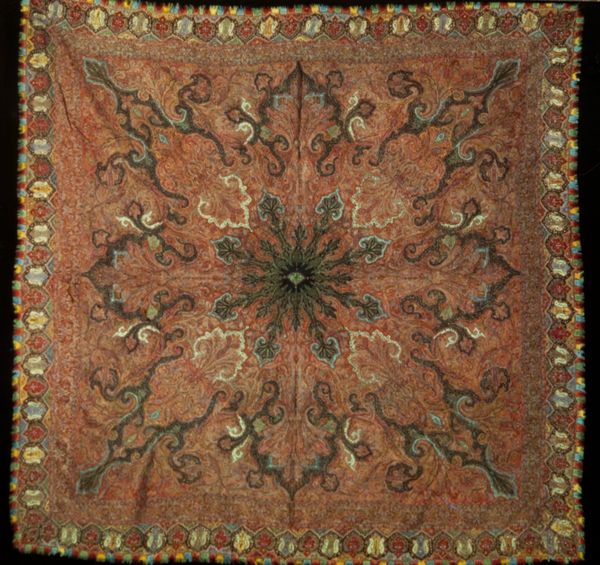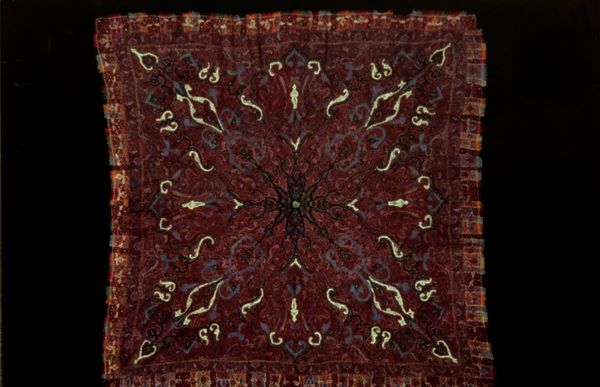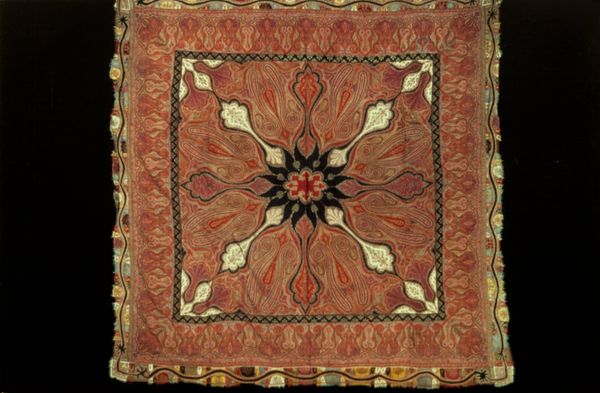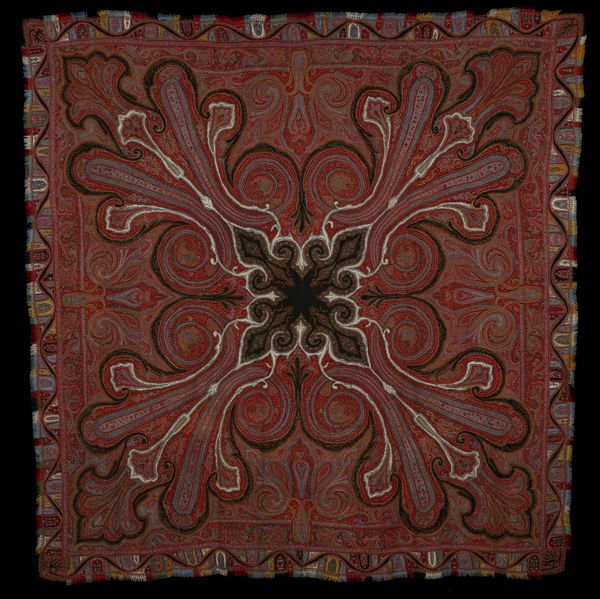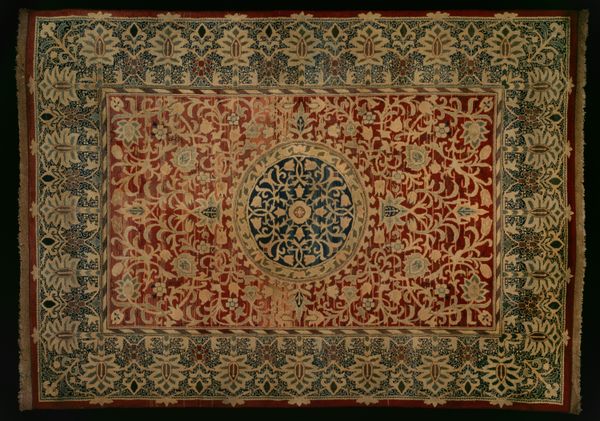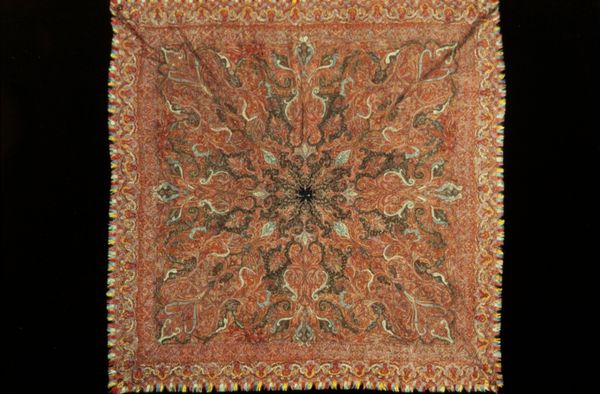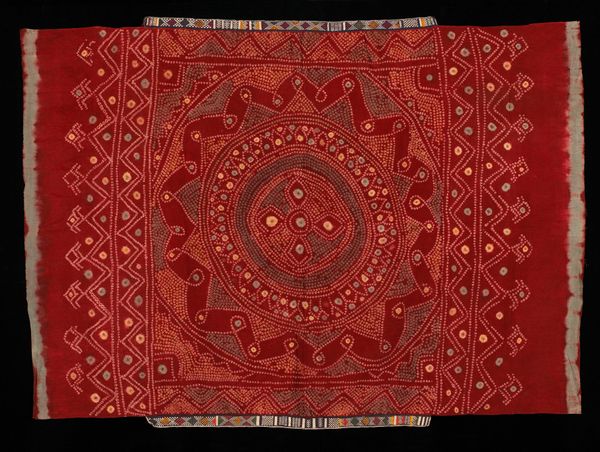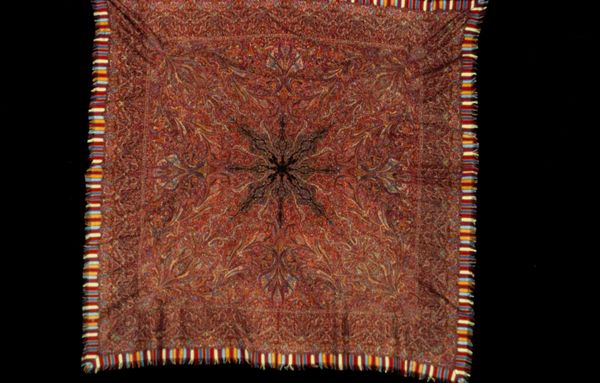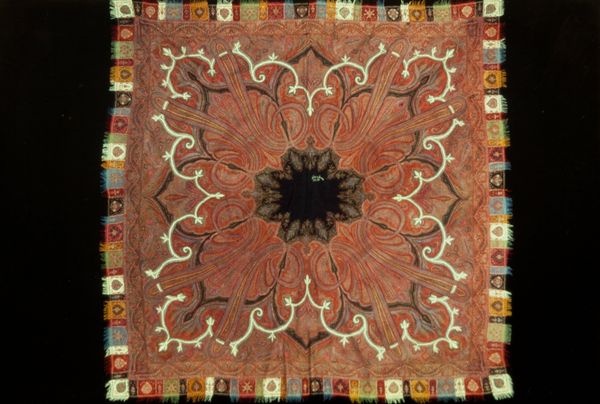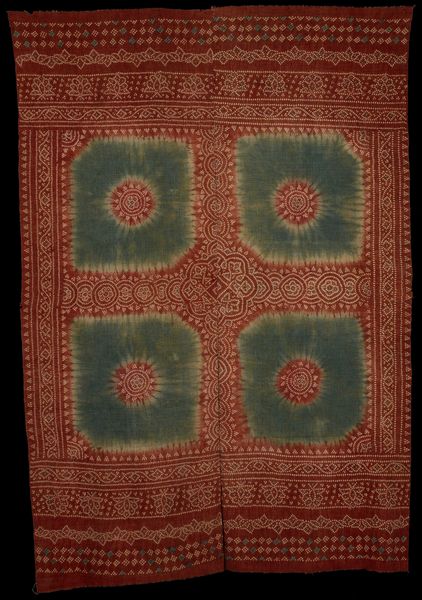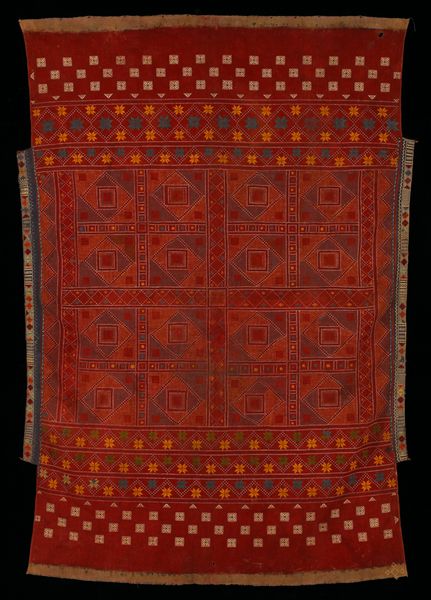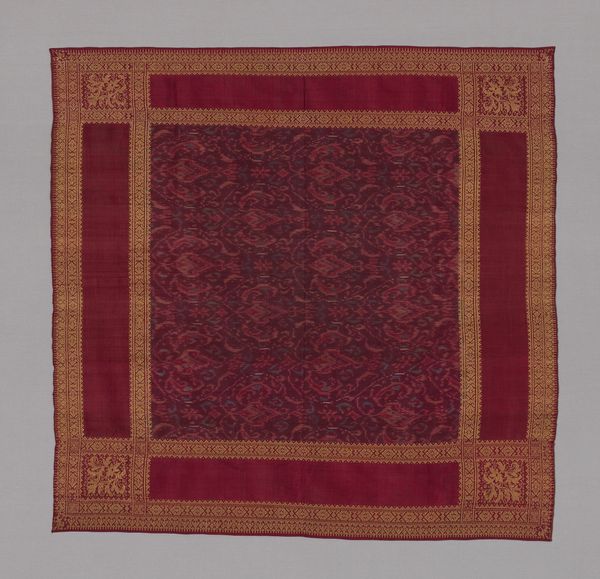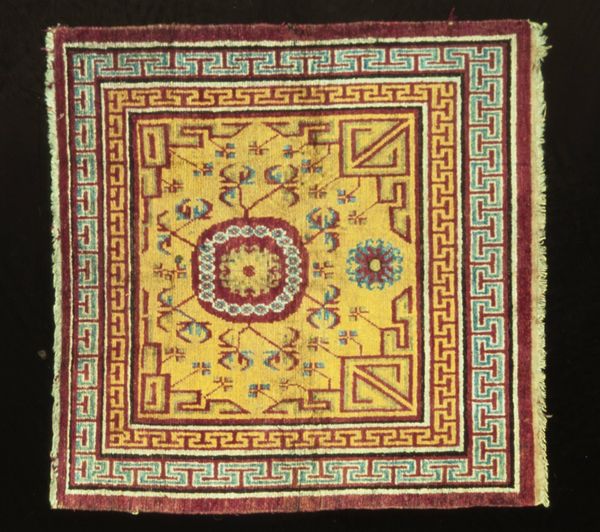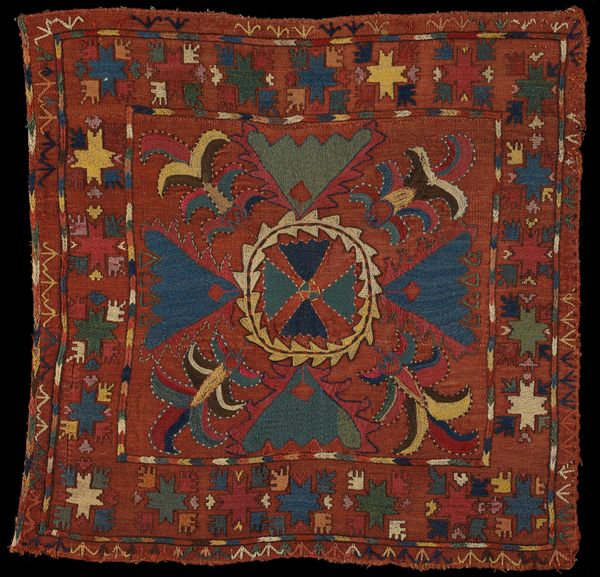
fibre-art, weaving, textile, wool
#
fibre-art
#
pattern
#
weaving
#
textile
#
wool
#
geometric pattern
#
organic pattern
#
geometric
#
flower pattern
#
pattern repetition
#
islamic-art
#
decorative-art
#
erotic-art
Dimensions: 200 × 211.7 cm (78 3/4 × 83 in.)
Copyright: Public Domain
Curator: Take a moment to observe this magnificent “Square Shawl,” dating back to approximately the 1870s. It is currently housed here at The Art Institute of Chicago. What is your immediate impression of the piece? Editor: It strikes me as both opulent and restrained. The overall effect is dominated by muted reds, a palette of dyed wool speaking of natural pigments laboriously rendered. Curator: Indeed. The pattern itself is a study in controlled chaos. Note how geometric structures, the square form of the textile itself, intersect with organic motifs—almost a kind of visual game being played across its surface. This reflects sophisticated design principles, even a dialogue between order and disorder. Editor: I'm curious about the shawl's origins. Shawls of this kind weren't merely decorative; they were powerful social indicators, reflecting trade routes, access to certain materials, and skilled labor, especially within weaving communities. Consider the resources needed to produce something like this: the sheep for the wool, the dyers for the color, the weavers who constructed this intricate, complex repeating design… It suggests quite a luxurious, even a powerful context for display. Curator: Agreed. But even further than that, there's the central motif. I see it as almost a symbolic focal point from which the rest of the pattern emanates, a sort of visual syntax organizing the whole composition around a deeper narrative. I suggest this particular piece also provides symbolic eroticism which may also reflect the time in which it was made. Editor: Absolutely. We cannot divorce this piece from a network of social and material relations. The question of what a shawl like this signified to those who wove it, wore it, and witnessed it becomes really critical in this framework. What did it mean to wear that object with all its embedded histories and labour? Curator: Precisely. So the real intrigue lies not just in the superficial pattern, but in these historical implications, which allows the piece to then be considered as having been built using deeper and much older concepts in art itself. Editor: I think by examining it with intention and by keeping history and theory present we begin to engage critically with its function and meaning, especially for this time period. Curator: So, it moves from a merely pleasing pattern to being something much richer as it encompasses many facets. Editor: Definitely. Examining this Square Shawl from both perspectives enhances the dialogue; we engage more deeply, questioning the very value ascribed and how it speaks across time and class divides.
Comments
No comments
Be the first to comment and join the conversation on the ultimate creative platform.
